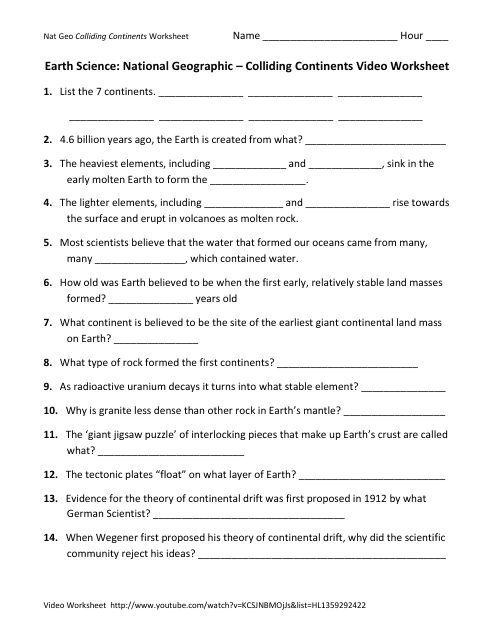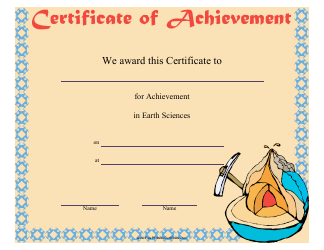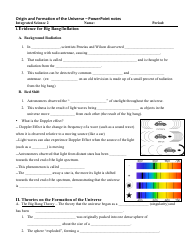Colliding Continents - Earth Science Worksheet
The Colliding Continents - Earth Science Worksheet is a learning resource typically used in Earth Science education to help students better understand the concept of plate tectonics and how continents move and interact with each other. It usually includes questions, diagrams, and activities related to the topic.
The colliding continents - Earth Science worksheet is typically filed by the teacher or instructor who assigns the worksheet to the students.
FAQ
Q: What are colliding continents?
A: Colliding continents refers to the process by which two tectonic plates collide and form mountains.
Q: What causes continents to collide?
A: Continental collisions are caused by the movement of tectonic plates.
Q: What happens when continents collide?
A: When continents collide, they create mountain ranges and can cause earthquakes and volcanic activity.
Q: What are some examples of collided continents?
A: Examples of collided continents include the Himalayas, the Alps, and the Andes.
Q: How does colliding continents affect landforms?
A: Colliding continents can lead to the formation of mountain ranges, such as the Rockies.
Q: What role do plate tectonics play in colliding continents?
A: Plate tectonics is the driving force behind the collision of continents.
Q: What other geological phenomena can occur during continent collision?
A: Other geological phenomena that can occur during continent collision include the formation of volcanoes and the creation of new land masses.
Q: What are the long-term effects of colliding continents?
A: The long-term effects of colliding continents can include the formation of vast mountain ranges and the rearrangement of land masses.
Q: How does colliding continents contribute to the Earth's geologic history?
A: Colliding continents have played a significant role in shaping the Earth's geologic history by creating major mountain ranges and changing the distribution of land masses.
Q: What are the potential hazards associated with continents colliding?
A: Potential hazards associated with continents colliding include earthquakes, volcanic eruptions, and landslides.
Q: How do scientists study colliding continents?
A: Scientists study colliding continents by examining rock formations, seismic data, and using satellite imagery and GPS technology.






